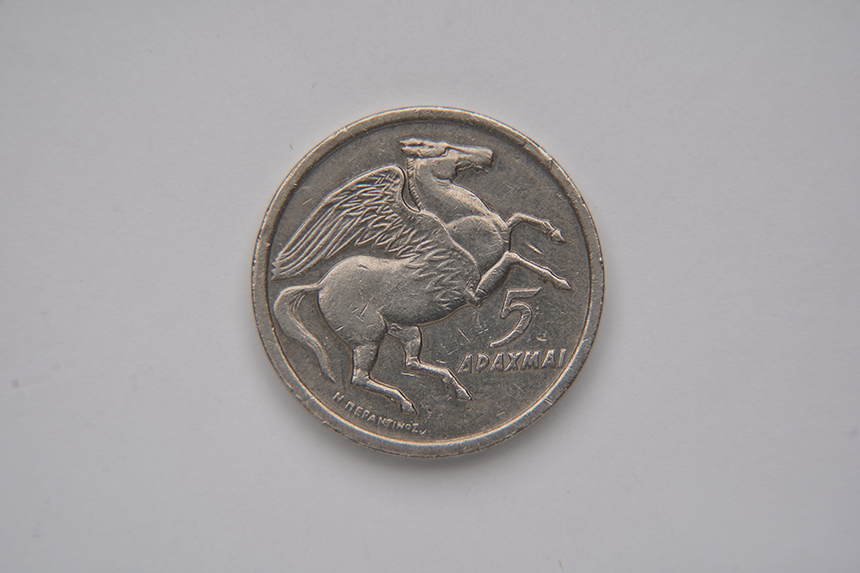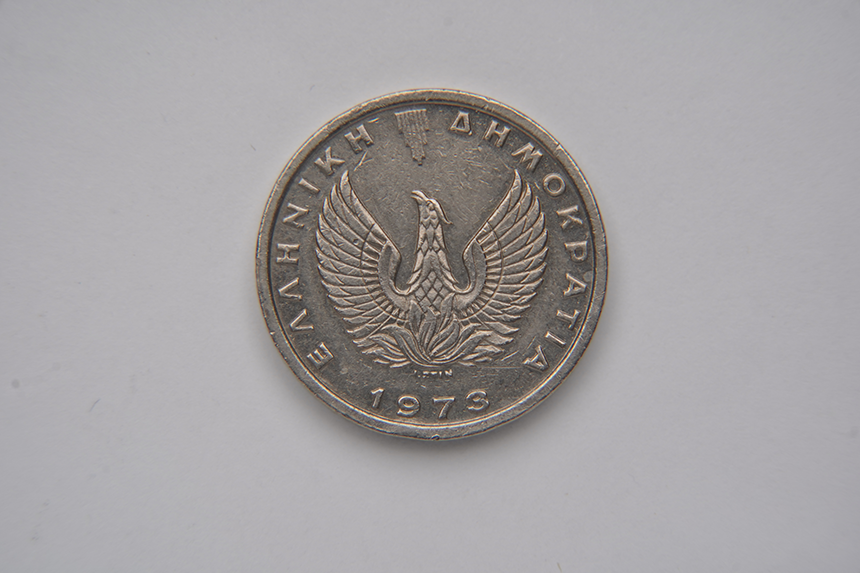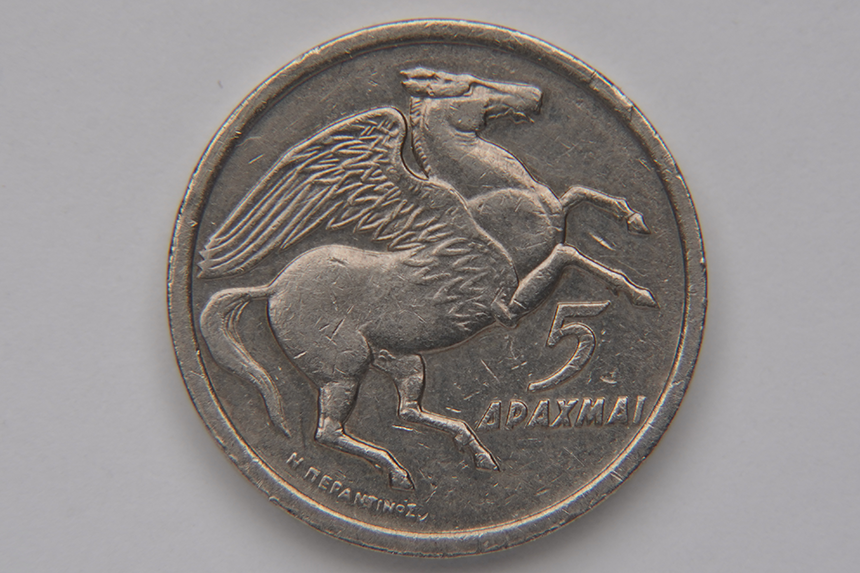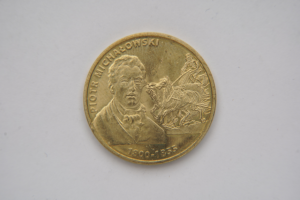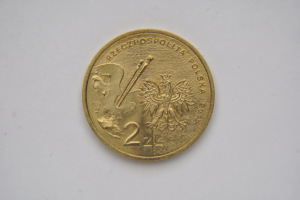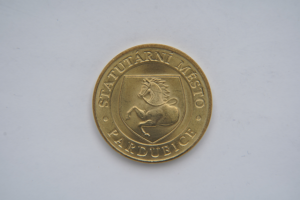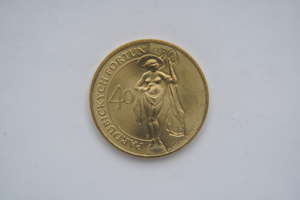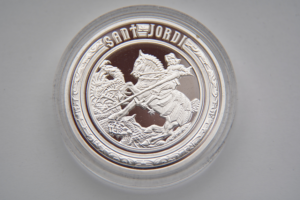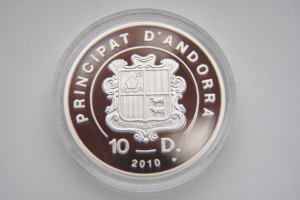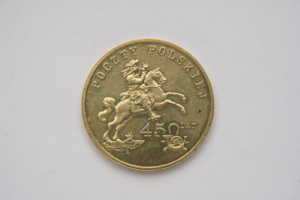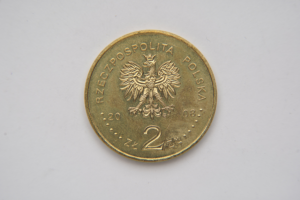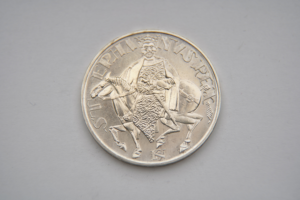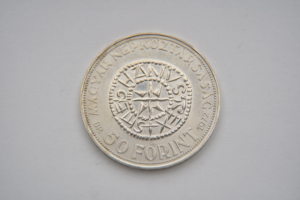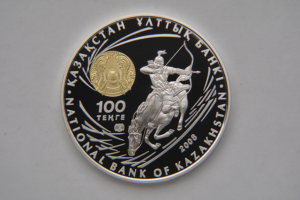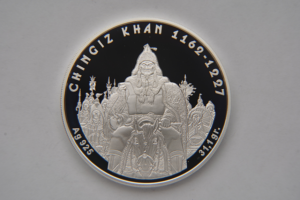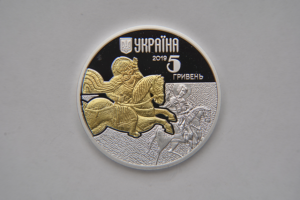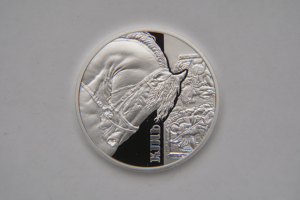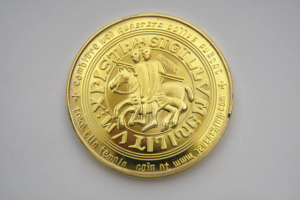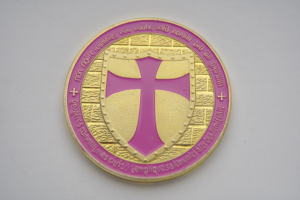Pegasus in a Greek Mythology.
Reverse of the coin.
Big size of obverse of the coin.
More information
Pegasus in a Greek Mythology.
So here we have the Greece drachma, nominal - 5. The year of issue of this coin is 1973, mint: Athens, Greece. Total circulation – 29.948.000.
Pegasus’s story was a favourite theme in Greek art and literature. Euripides’ lost tragedy Bellerophon was parodied at the beginning of Aristophanes’ Peace (421 BC). In late antiquity Pegasus’s soaring flight was interpreted as an allegory of the soul’s immortality; in modern times it has been regarded as a symbol of poetic inspiration.
Pegasus, in Greek mythology, a winged horse that sprang from the blood of the Gorgon Medusa as she was beheaded by the hero Perseus. With Athena’s (or Poseidon’s) help, another Greek hero, Bellerophon, captured Pegasus and rode him first in his fight with the Chimera and later while he was taking vengeance on Stheneboea (Anteia), who had falsely accused Bellerophon.
Subsequently Bellerophon attempted to fly with Pegasus to heaven but was unseated and killed or, by some accounts, lamed. The winged horse became a constellation and the servant of Zeus. The spring Hippocrene on Mount Helicon was believed to have been created when the hoof of Pegasus struck a rock.
Object data
Title
Pegasus in a Greek Mythology.
Artist
Obverse: I. Stinis. Reverse: Nikos Perantinos.
Founder
Athens, Greece.
Date
1973.
Culture
Greece.
Medium
Nickel-brass.
Dimensions
9.1x25x2.44.
Classification
Coin.

